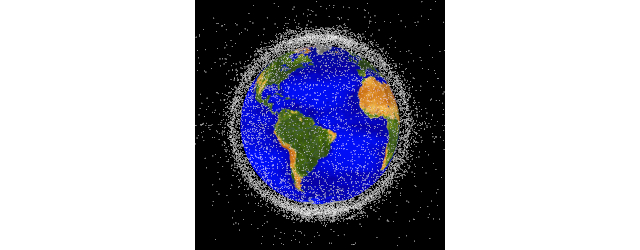What protects minority languages from extinction? (Vol. 51, No. 4)

(CC BY-SA 2.0, by Flickr user quinn.anya).
Mathematical modelling of competing languages in a geographical area suggests two scenarios in which one or more minority languages will be more likely to survive.
Over 6,000 languages are currently spoken worldwide, but a substantial minority - well over 5% - are in danger of dying out. It is perhaps surprising that this fraction is no higher, as most models have so far predicted that a minority language will be doomed to extinction once contacts with speakers of the majority language reach a certain level. This work describes, using mathematical modelling, two mechanisms through which this doomsday scenario does not occur, i.e. several languages come to coexist in the same area.
J-M Luck and A Mehta, On the coexistence of competing languages, Eur. Phys. J. B 93, 73 (2020)
[Abstract]
Mutual extinction of light (Vol. 51, No. 4)

In many branches of the natural sciences Nature is interrogated by performing wave scattering experiments. An incident wave impinges on a sample, and characteristics of the scattered and transmitted waves are analysed to find detailed information about the target.
When a single light wave is incident on a complex scattering medium, the transmitted intensity differs from the incident one due to extinction. We introduce the new concept of mutual extinction, which occurs when more than one light wave is incident and propose new experiments to observe mutual extinction and transparency in two-beam experiments with either elastic and absorbing scatterers.
A. Lagendijk et al., Mutual extinction and transparency of multiple incident light waves, EPL 130, 34002 (2020)
[Abstract]
Advancing AGATA – Future Science with The Advanced Gamma Tracking Array (Vol. 51, No. 4)

The Advanced Gamma Tracking Array is a multi-national European project realising a high-resolution gamma-ray spectrometer for nuclear physics.
As a travelling detector AGATA will be employed at the major European research facilities delivering stable and radioactive ion beams. It will have a large impact on nuclear structure studies at the extremes of isospin, mass, angular momentum, excitation energy and temperature. AGATA is capable of measuring γ rays from a few tens of keV to beyond 10 MeV, with high angular resolution and high count-rate capabilities. This review describes the exciting science program to be performed with AGATA enabling us to uncover and understand hitherto hidden secrets of the atomic nucleus.
The AGATA Collaboration, W. Korten et al., Eur. Phys. J. A 56, 137 (2020)
[Abstract]
Space science (Vol. 51, No. 4)

Space exploration is moving into a new era, with the focus of science and research move from one-off achievements and firsts, to the establishment of frameworks that will encourage sustainability.
At the same time, the more we learn about space, the more we realise that plans must be put in place to mitigate threats from beyond our own atmosphere. In an EPJ-ST Special Topics issue on 'Celestial Mechanics in the XXIst Century' in particular studies related to the risk of collisions of space vehicles with space debris and strategies to avoid a collision of an asteroid with the Earth are presented.
Reducing the risk of space debris collision
A plausible method of clearing space debris could be achieving through the use of a tug vehicle that requires a successful connection procedure.
de Jesus, A.D.C., Santos, G.L.F., Reducing the risk of space debris collisions using conditions or performance simultaneous operation in minimum time. Eur. Phys. J. Spec. Top. 229, 1419–1427 (2020)
[Abstract]
Protecting Earth from asteroid impact with a tethered diversion
The use of a tether assisted system could prevent an asteroid impacting Earth without the risk of fragmentation.
Venditti, F. C. F., Marchi. L. O., Misra. A. K, Sanchez. D. M., Prado. A. F. B. A. , Dynamics of tethered asteroid systems to support planetary defence, Eur. Phys. J. Spec. Top. 229, 1463–1477 (2020)
[Abstract]
Spacecrafts get a boost in ‘Aerogravity Assisted’ interactions
New research examines the effect of rotation and other variables in the applications of ‘Aerogravity Assisted’ manoeuvres to obtain an energy boost for space crafts.
Piñeros. J. O. M., Gomes. V. M., dos Santos. W. A., Golebiewska J. , Effects of the rotation of a spacecraft in an atmospheric close approach with the Earth, Eur. Phys. J. Spec. Top. 229, 1517–1526 (2020)
[Abstract]






